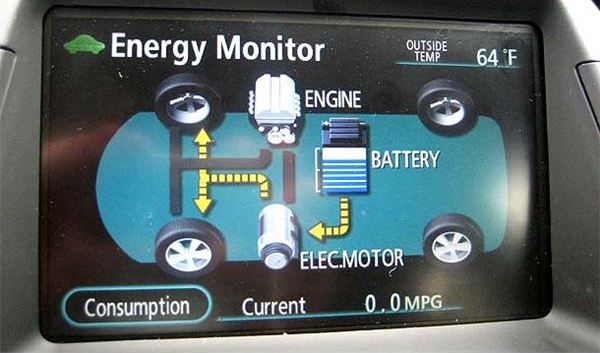Consider hybrid cars: they have two motors with independent power sources, but everything interoperates in a really clever way. For example, speed and acceleration will determine if using the electric motor or the gasoline engine – or both – is most efficient.
But the engine also produces electricity which can be used to charge the battery or power the electric motor. Quite a complex system!
I was impressed when, recently in a taxi, I saw this information displayed visually on the car's dashboard. It looked something like this.

To display a model of such a complex system in a way that a human can interpret at-a-glance while driving is no small feat; the user interface is quite impressive. I realized that its metaphors were applicable to people, too. Specifically, to me.
I have a finite amount of energy that comes from different places. Throughout the day – typically – I spend energy from my "battery" to interact with others. This is introversion vs extroversion on a fundamental level. But I am neither.
Sometimes, spending time with people isn't a cost; sometimes it doesn't take energy. Sometimes, like an extrovert, I get energy from others. Similar to regenerative braking on hybrid cars, I can use the energy from others to recharge my battery.

What I've really noticed is that this ability for me to get energy from people really depends on my mood. If I'm feeling down, like over the past month, it's hard for me to really enjoy and appreciate – and recharge from – time with others. I've been spending all my energy throughout the day and trying to recharge at night.
But today, for the first time in a while, I felt recharged by being around others. I felt fulfilled.
I'm not saying this metaphor makes sense to other people – it's not meant to be prescriptive. But it does make sense to me as a model for how to gauge myself and plan for different situations. Maybe I can be more strategic about where and when I spend my energy, maybe optimizing for the highest chances of getting energy back.